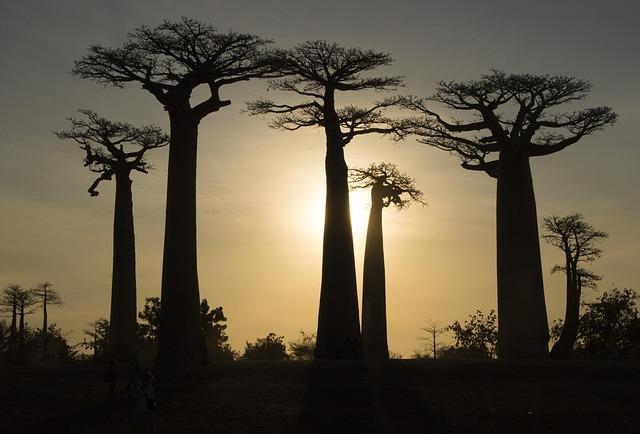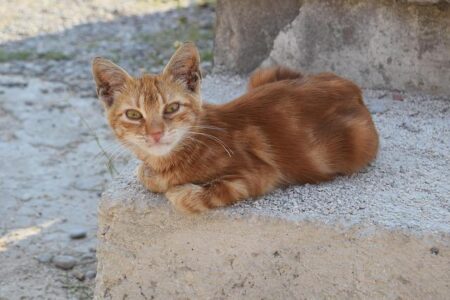In the wake of escalating environmental challenges, the islands of Madagascar are confronting a crisis that threatens not only its unique biodiversity but also the livelihoods of its inhabitants. Wildfires, fueled by a combination of climate change, deforestation, and agricultural practices, have become increasingly devastating, prompting urgent responses from both local and international organizations. Among the key players in this effort is the U.S. Fish and Wildlife Service, which is spearheading initiatives aimed at enhancing fire resilience across the region.This article explores the multifaceted approach being undertaken to mitigate the risks of wildfires in Madagascar, highlighting collaborative strategies that seek to restore ecosystems, empower communities, and promote lasting land management practices.As Madagascar stands at a crossroads, the need for proactive measures to safeguard its natural heritage and foster resilience has never been more pressing.
Strategies for Enhancing Ecological Resilience in Madagascar’s Unique ecosystems

Madagascar’s ecosystems are not only among the most biodiverse in the world but also are uniquely vulnerable to the increased frequency and intensity of wildfires. In light of these challenges, implementing strategies aimed at enhancing resilience is imperative for the conservation of its flora and fauna.Key approaches include:
- Community Engagement: Engaging local communities in conservation efforts fosters stewardship and reduces reliance on fire for land clearing.
- Controlled Burning Practices: Implementing fire management techniques, such as controlled burns, can help maintain ecosystem health while mitigating uncontrolled wildfires.
- Restoration of Native Vegetation: Encouraging the growth of native plant species can improve soil health and reduce fire risk by increasing moisture retention.
- Firebreak construction: Creating physical barriers can effectively limit the spread of wildfires and protect vulnerable habitats.
Moreover, enhancing ecological resilience requires a multifaceted approach that involves scientific research and education. Collaborative initiatives focusing on the following elements can promote a healthier ecosystem:
| Strategy | Benefit |
|---|---|
| Monitoring Fire Patterns | identifying trends can guide future preventative measures. |
| Ecological Restoration Projects | Restoration efforts improve biodiversity and ecosystem function. |
| Education and Advocacy | Raising awareness about the importance of fire management practices. |
By enhancing our understanding of fire dynamics and fostering resilience among local ecosystems, we can work toward a sustainable balance that protects Madagascar’s extraordinary biodiversity for generations to come.
The Role of Community Engagement in Fire Prevention Initiatives

Community engagement plays a pivotal role in enhancing fire prevention initiatives, particularly in regions like Madagascar where the ecological balance is delicate. By actively involving local stakeholders, including residents, farmers, and local organizations, a sense of ownership and obligation toward fire prevention can be fostered. This engagement can take various forms, such as:
- Workshops that educate the community about fire risks and prevention techniques.
- Training sessions for locals on how to manage controlled burns responsibly.
- Public awareness campaigns to highlight the importance of fire safety practices.
Moreover, integrating traditional ecological knowledge wiht modern fire management strategies can lead to tailored solutions that respect cultural practices while improving safety. Collaborations with local leaders and organizations can facilitate the exchange of facts and resources, resulting in more effective fire prevention measures. Consider the following collaborative efforts:
| Collaborative Efforts | Benefits |
|---|---|
| Community Watch Programs | Increased vigilance and speedy reporting of fire incidents |
| Firebreak Construction | Physical barriers to slow down fire spread |
| Reforestation Projects | restoration of natural habitats reduces wildfire fuel |
Integrating Traditional Knowledge with Modern Fire Management Practices

In Madagascar, where biodiversity is rich yet increasingly threatened, the integration of traditional knowledge with modern fire management is proving essential. Indigenous communities have long utilized fire as a tool for land management,employing techniques that have evolved over generations. These practices are often characterized by their contextual understanding of local ecosystems, allowing for controlled burns that encourage the regeneration of native flora and fauna. By recognizing the significance of such traditional methods, fire management strategies can substantially benefit from local expertise.
Collaborative efforts can be implemented through workshops and educational programs that bring together local leaders, fire scientists, and conservationists. This approach not only respects the wisdom accumulated over years but also incorporates scientific methodologies to optimize fire resilience. Key strategies include:
- Community Engagement: Involving local populations in decision-making processes to ensure the appropriateness of techniques used.
- Sharing Best Practices: Creating platforms for exchanging traditional and scientific fire management practices.
- Adaptive management: Continuously evolving management practices based on feedback from both traditional knowledge and modern research.
The synergy of these approaches could be further enhanced by establishing a framework that documents and analyzes the effectiveness of integrated fire management practices. A simple table could illustrate the comparative success rates of various methods exhibited in Madagascar:
| Method | Tradition-Driven Success Rate | Modern Science Adaptation Success Rate |
|---|---|---|
| Controlled Burns | 85% | 75% |
| Firebreak Establishment | 70% | 90% |
| Vegetation Monitoring | 60% | 80% |
Data like this not only showcases the potential of combining methodologies but also encourages a dialog between traditional and modern practices in combating fire-related challenges in Madagascar.
Investing in Research for Improved Fire Risk assessment and Monitoring

Investing in cutting-edge research is crucial for enhancing fire risk assessment and monitoring in Madagascar’s diverse ecosystems. With the increasing frequency and intensity of wildfires, it is indeed imperative to establish a robust framework that leverages scientific data and technology for effective fire management. Key priorities in this research include:
- Advancement of advanced predictive models that identify high-risk areas.
- integration of satellite imagery and drone surveillance for real-time monitoring.
- Collaboration with local communities to gather traditional knowledge on fire behavior.
Moreover, improved data collection methods can enhance our understanding of fire dynamics and facilitate timely responses. By conducting extensive studies on vegetation types, moisture levels, and historical fire patterns, researchers can develop targeted strategies to mitigate fire risks. The following table summarizes the critical areas of research focus:
| Research Focus | Objectives |
|---|---|
| Fire Behavior Analysis | understand the factors influencing fire spread. |
| Community engagement | Incorporate local insights into fire management plans. |
| Technology Integration | Utilize modern tools for monitoring and response. |
Policy Recommendations for Strengthening Fire Management Frameworks

To effectively strengthen fire management frameworks in madagascar, it is essential to establish a multi-stakeholder approach that harmonizes local, national, and international efforts. Engagement with local communities is crucial, as they are often the frist responders to wildfires. The following strategies can enhance community involvement:
- Capacity Building: Implement training programs on sustainable land management and fire risk assessment.
- Adequate resources: Ensure communities receive necessary tools and equipment for fire detection and suppression.
- Communication Channels: Establish clear lines of communication between government agencies, NGOs, and local inhabitants to share information and resources.
Furthermore, adopting a comprehensive policy framework that integrates science and traditional knowledge can lead to more resilient ecosystem management. Crucial elements of this framework may include:
| Policy Element | Description |
|---|---|
| Monitoring and Evaluation | Regular assessments of fire management practices and ecological outcomes. |
| Research Initiatives | Invest in studies examining fire behavior, climate change impacts, and biodiversity recovery. |
| Partnership Development | Foster collaborations between governmental, academic, and indigenous leaders to share knowledge and expertise. |
Building Collaborative Networks for Sustainable Land Use and Rehabilitation

The effectiveness of combating fire-related challenges in Madagascar significantly hinges on fostering collaborative networks. Engaging stakeholders from various sectors, including local communities, governmental agencies, and environmental NGOs, is essential for creating a unified front against the threats posed by wildfires. This cooperation facilitates the pooling of resources and knowledge, allowing participants to share:
- Best practices in land use and fire management.
- Innovative techniques for land rehabilitation.
- Research findings that enhance understanding of fire dynamics.
Moreover, establishing partnerships can lead to the development of comprehensive frameworks for sustainable land management. By leveraging local expertise and incorporating traditional ecological knowledge, these networks can devise tailored strategies that are both effective and culturally acceptable. The US Fish and Wildlife service plays a pivotal role in fostering these relationships, hosting workshops and facilitating forums that empower communities to take part in:
- Fire prevention initiatives that reduce ignition sources.
- Reforestation programs aimed at restoring critical habitats.
- Awareness campaigns to educate about fire risks and mitigation.
Future Outlook
enhancing fire resilience in Madagascar is a critical endeavor that not only aims to protect the country’s unique biodiversity but also supports the livelihoods of its communities. The efforts spearheaded by the US Fish and Wildlife Service, in collaboration with local partners and stakeholders, underscore the importance of a multifaceted approach to fire management. By implementing innovative strategies such as community education, improved land practices, and proactive monitoring, these initiatives strive to mitigate the threat posed by wildfires, which are becoming increasingly frequent due to climate change and human activities.
The road ahead may pose challenges, but the commitment to safeguarding Madagascar’s ecological treasures is unwavering. As these efforts continue to evolve, they serve as a testament to the power of collaboration and the critical need for ongoing investment in conservation. For Madagascar, ensuring fire resilience is not merely a matter of environmental stewardship; it is indeed essential for the survival of its remarkable flora and fauna, and also the cultural heritage of the island’s inhabitants. The work being done today will lay the groundwork for a more sustainable and secure future for generations to come.







